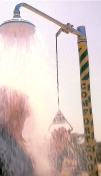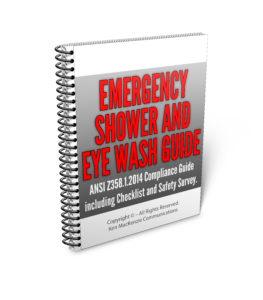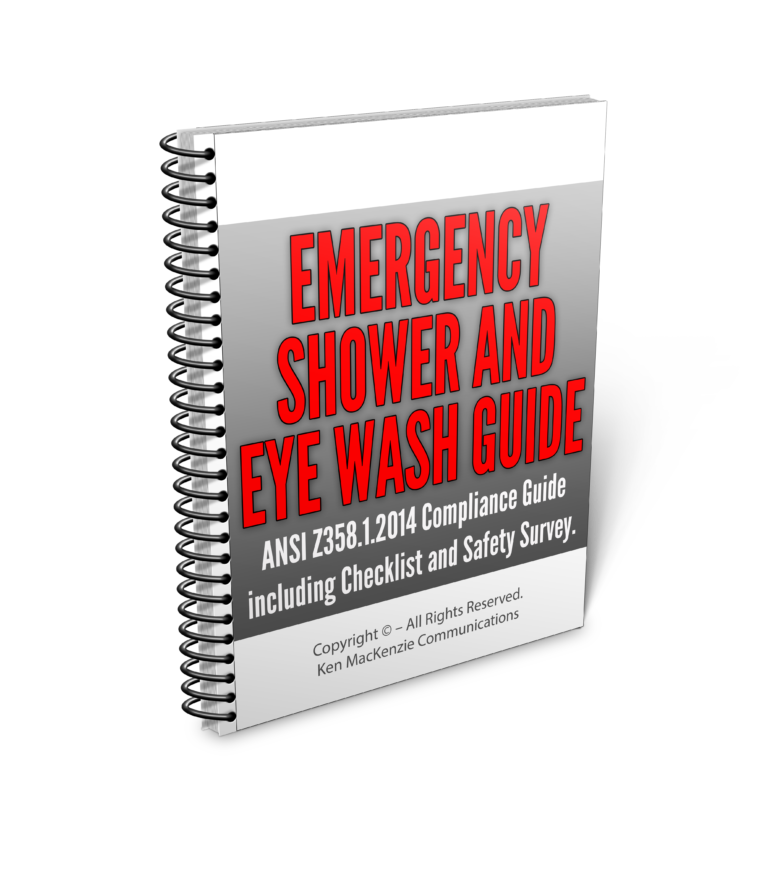Table of Contents
Emergency shower and Eye Wash Station Equipment
“Today’s safe workplaces demand advanced emergency shower and eyewash station requirements”
The Occupational Safety and Health Act of 1970 was enacted to assure that workers are provided with “safe and healthful working conditions.” Under this law, the Occupational Safety and Heath Administration (OSHA) was created and authorized to adopt safety standards and regulations to fulfil the mandate of improving worker safety.
 OSHA has adopted several regulations that refer to the use of eye wash and safety shower equipment. The primary regulation is contained in 29 CFR 1910.151, which requires that “…where the eyes or body of any person may be exposed to injurious corrosive materials, suitable facilities for quick drenching or flushing of the eyes and body shall be provided within the work area for immediate emergency use.”
OSHA has adopted several regulations that refer to the use of eye wash and safety shower equipment. The primary regulation is contained in 29 CFR 1910.151, which requires that “…where the eyes or body of any person may be exposed to injurious corrosive materials, suitable facilities for quick drenching or flushing of the eyes and body shall be provided within the work area for immediate emergency use.”
The eye wash station and emergency safety shower…..
Employers should look for signs of hazardous materials. Look for areas where workers are using personal protective equipment such as goggles and liquid proof gloves and make sure the eye wash station and emergency shower drench are within the required distance as stated by:
By not complying with the ANSI standard, OSHA may elect to impose penalties from warnings and fines to rare plant shutdowns.
It’s important to note that emergency shower and eye wash equipment are designed to deliver water to rinse contaminants from a user’s eyes, face or body. As such, they are a form of first aid equipment to be used in the event of an accident.
However, they are NOT a substitute for primary protective devices such as eye and face protection and protective clothing. Again, a safety shower is not an alternative to safe procedures for handling hazardous materials.
It is imperative that eye wash and safety shower units meeting ANSI Z358.1-2014 be within 10 seconds travel time from a hazard.
However, there are other considerations and, in this regard, please see Safety shower location Information.
This Standard also requires that safety shower valves be of a simple operation; that they turn off to on in one second or less, and provide hands free operation once activated. The Standard also requires that the flushing fluids be tepid.
 Safety shower and eyewash stations
Safety shower and eyewash stations
These provide on-the-spot decontamination and allow personnel to flush away hazardous substances that can cause injury. Splashing accidents demand prompt and effective action. The affected body part should be flushed for a minimum of 15 minutes using a clean supply of flushing fluid under low pressure.
Emergency shower and eyewash stations are designed to flush the user’s head and body. They can also be used effectively in flushing contaminants from clothing. The safety showers should not be used to flush the user’s eyes because the high rate of water flow could cause damage.
Eye and face wash stations are designed to flush both eyes and face simultaneously at a velocity low enough to be non – injurious to the user. Medical help should be sought immediately after the first aid has been given.
Emergency showers should be used in all chemical and cryogenic handling areas, in battery rooms and in all situations where clothing, fires or impingement burns may occur.
Consideration should be given to the possible need for multiple emergency shower installations based upon access distance and the possibility that more than one person may be affected at the same time.
To identify hazards in your workplace please visit: Workplace Hazard Identification
The OSHA standard 29 CFR 1910.151(c)
Requires emergency shower and eyewash equipment for emergency use where the eyes or body of any employee may be exposed to injurious corrosive materials. For details on emergency eyewash and shower equipment we reference consensus standard ANSI Z358.
Learn more about emergency response products
What piece of equipment is used to irrigate and wash your eyes?
The ANSI standard states that a drench hose may be considered an eyewash or eye/face wash if the drench hose meets the performance requirements as listed in the standard. Eye irrigation is the process of using a sterile solution to flush the eyes of any foreign bodies. While it’s ok to use sterile, purified water, many physicians prefer a sterile saline solution thanks to its antibacterial properties.
What is the OSHA requirement for eyewash stations?
Plumbed and self-contained eyewash stations, and those in combination units, must flow at a minimum of 1.5L/ min for 15 minutes; plumbed or self contained eye and face wash stations at 11.4L/ min for 15 minutes
Is an eyewash considered a form of safety equipment?
Emergency showers and eyewash stations provide on-the-spot decontamination. They are designed to flush away hazardous chemicals from a user’s eyes, face or body that can cause injury. As such, they are a form of first aid equipment to be used in the event of an accident.
What is the top-selling product within Eyewash Stations & Emergency Showers?
Top selling safety showers and eyewash station products are essential for OHS in workplaces with hazardous chemicals or debris.
As an Amazon Affiliate I earn from qualifying purchases. EmergencyShowerSystems.com is a participant in the Amazon Services LLC Associates Program, an affiliate advertising program designed to provide a means for sites to earn advertising fees by advertising and linking to Amazon.com.
Links on this emergency shower and eyewash station page are sponsored affiliate links and the owner makes commission if you buy after clicking these links. The owner is not a bona-fide user of these emergency shower and eyewash station products. However, we have thoroughly researched it and provided a personal opinion only. This disclosure is in accordance with the Federal Trade Commission’s 16 CFR, Part 255: “Guides Concerning the Use of Endorsements and Testimonials in Advertising.”


